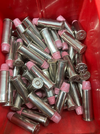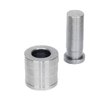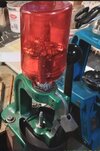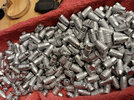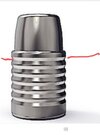New handloader here -- Cap and Ball revolvers pushed me over the edge.
I've casted round ball a few times now with pure lead from Rotometals for black powder stuff. Decided to make the jump to .38 Special for starters... Recently acquired a Lee hand press, carbide dies, scale, TL358-158-SWC mold, Alox lube...
I realized BHN of pure for C&B is too low... So I did a late night impulse buy of some Rotometals hardball: "Hardball Bullet Casting Alloy consists of 2% tin, 6% antimony and 92% lead. This modern version of the old Lyman #2 is an excellent all-around alloy for most handgun bullets and many higher velocity rifle cartridges. The Brinell Hardness of Hardball Alloy is about 16."
Did I go too high for BHN? I noticed afterwards they offer a 1 to 16 Bullet Alloy with a BHN of 11... Would that have been better, based on this link: From Ingot to Target: A Cast Bullet Guide for Handgunners
(Should I go ahead and cast and load that hardball ingot?)
Afterwards... Bullet sizing kit from Lee ...required?
-Thanks for any advice
I've casted round ball a few times now with pure lead from Rotometals for black powder stuff. Decided to make the jump to .38 Special for starters... Recently acquired a Lee hand press, carbide dies, scale, TL358-158-SWC mold, Alox lube...
I realized BHN of pure for C&B is too low... So I did a late night impulse buy of some Rotometals hardball: "Hardball Bullet Casting Alloy consists of 2% tin, 6% antimony and 92% lead. This modern version of the old Lyman #2 is an excellent all-around alloy for most handgun bullets and many higher velocity rifle cartridges. The Brinell Hardness of Hardball Alloy is about 16."
Did I go too high for BHN? I noticed afterwards they offer a 1 to 16 Bullet Alloy with a BHN of 11... Would that have been better, based on this link: From Ingot to Target: A Cast Bullet Guide for Handgunners
(Should I go ahead and cast and load that hardball ingot?)
Afterwards... Bullet sizing kit from Lee ...required?
-Thanks for any advice


 +1
+1